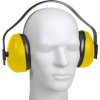DanielT
Master Contributor
Makes sense for music.
But for a movie, which reference level being at about 105 db, and sitting about 3 to 4 meters away... I'd really like to know if
1) the kef tweeter can keep up at 105 vs the 102 and at that long distance
2) for how long? Tweeter drive system will probably overheat and start compression... a long 5 minute drawn out action scene
I'm only saying PA stuff, which are made to play at high SPL for longer periods of time. However, the disadvantage may then be that they automatically do not sound so good at lower or let's say normal or even high listening volumes (compared to good HiFi speakers such as the KEF R11). I know a generalization but still.Even for a movie I strongly doubt someone will have an long term average of 105 dB at the high frequency at the listening position continuously, as such would be VERY loud and also dangerous for the hearing, see also above plot for the spectrum, In my experience also the limit of almost all loudspeakers comes first in the bass, even the 4 x 6.5" woofers of the R11 Meta won't easily reach that level at 3-4 meters distance.
Here are distortion measurements of the old R11 non Meta, you see that rather the woofers suffer at 100 dB /1 m:
View attachment 359430
Source of above measurement: https://www.hegel.com/images/reviews/H190audiogermany.pdf
105 dB for a longer time=


